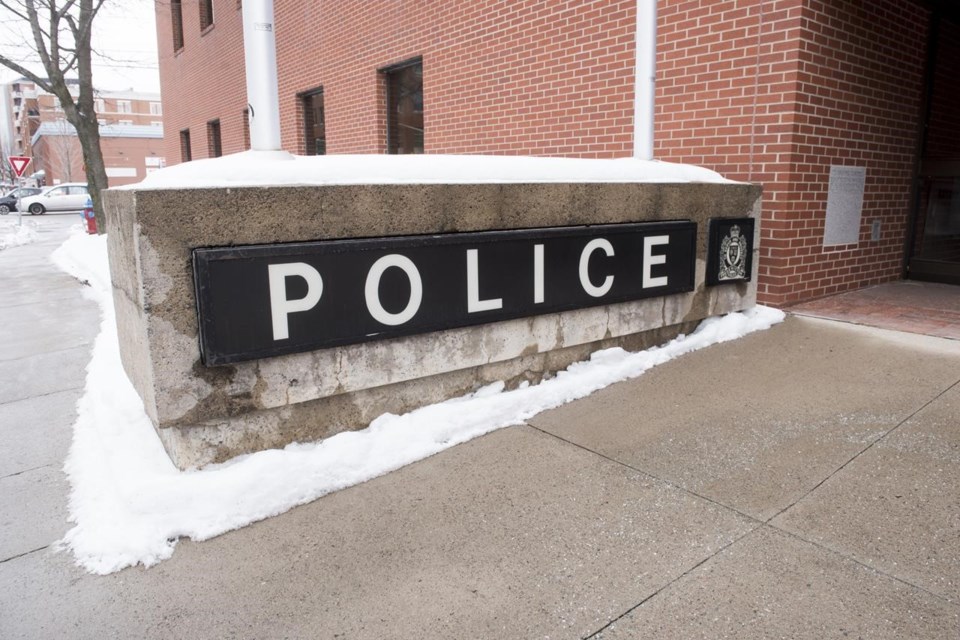FREDERICTON — New Brunswick was the only province in Canada to record fewer police-reported crimes in 2022 compared with the prior year, data from Statistics Canada show.
The agency's crime severity index — a measure that includes violations of the Criminal Code and other federal statutes — rose by four per cent across Canada in 2022. Manitoba recorded the biggest increase, with 14 per cent, followed by Quebec, Newfoundland and Labrador, and Prince Edward Island, all with jumps of six per cent.
But New Brunswick bucked the national trend, with a crime severity index dropping by two per cent in 2022 compared with 2021.
Neil Boyd, professor emeritus at Simon Fraser University's school of criminology, said there needs to be a closer look at what would insulate New Brunswick from some of the problems seen in other cities.
"We tend to think sometimes that crime goes up and down because of the legislation that we impose. But if you look at the legislation we've imposed over time in the Criminal Code amendments, they don't really have much impact," he said in a recent interview.
"It's cultural change that matters."
Crime in New Brunswick, however, isn't evenly distributed. While crime fell across the province, the city of Fredericton recorded increases in non-violent crime. As rates dropped in the city for violent crime — robbery, extortion, homicide and sexual assault — they rose for such things as property and drug offences.
Fredericton Police Chief Martin Gaudet said he is not surprised by the city's rates of crime, both violent and non-violent, adding that they are keeping up with the trends.
The government has pumped millions of dollars into programs targeting guns and gangs, which could be helping to lower the violent crime rate, he said. As far as non-violent crime is concerned, Gaudet said mental health calls have gone up "significantly" in the city.
"The drug addictions and the homelessness … is very difficult. It's a social problem," he said in an interview Thursday.
"We're not going to police ourselves out of homelessness. We have to work with our community partners. It's a complicated social situation, a complex problem. We can try to understand it better and put the resources around it, maybe we can start to make a difference. But it's going to take a while. It's a marathon."
Other non-violent crime, such as theft of food from a store, could be attributed to people resorting to "survival mode" because they are broke, he said.
"They need food and they go into a store, grab a sandwich and walk out. So we're seeing more of that for sure. In my humble opinion, the reason is probably the fact that they are very desperate. I mean, it's a basic human necessity," Gaudet said.
"When you have no money, or you spent your money on drugs because you have an addiction, or other basic human needs ... it's very sad and complex, and then we go there and we arrest them for shoplifting or thefts when really the underlying issue is an addiction problem. And that's what we need to tackle."
The Statistics Canada report released last week showed an eight per cent increase in homicides across the country, with 874 reported last year, compared to 796 in 2021. Homicide rates were the highest since 1992, the report said, with British Columbia, Manitoba and Quebec leading the country.
There were 225 Indigenous homicide victims last year, 32 more than in 2021. About 69 per cent of Indigenous homicide victims were identified as First Nations, while three per cent were Métis and four per cent were Inuit.
The homicide rate for Indigenous people — 10.98 per 100,000 people — was nearly seven times higher compared with the rate for the non-Indigenous population — 1.69 per 100,000 people, the data show.
Last year, the report said there were 9,198 victims of violent crime in which a firearm was used, which is 10 per cent higher compared with 2021. The rate of victims of firearm-related crime has generally been increasing since 2013, it said.
Boyd said there has "certainly" been an uptick in crime over the past four or five years.
"And, of course, that's a legitimate concern," he said. But the changes aren't dramatic, he added.
"In comparison to 2007 we're a little higher than we were at that time.”
A larger data set with a 10-year time frame might help in getting a better understanding behind the national crime rate, Boyd said.
"We need to look behind the numbers. We need to get more detail and understanding (of) why crime is going up," he said.
"And that can only be done by talking to the people who are dealing with crime — to police officers to community leaders and cities across the country and to those people who are witnessing these changes to get their sense of why it's occurring."
This report by The Canadian Press was first published Aug. 3, 2023.
Hina Alam, The Canadian Press




